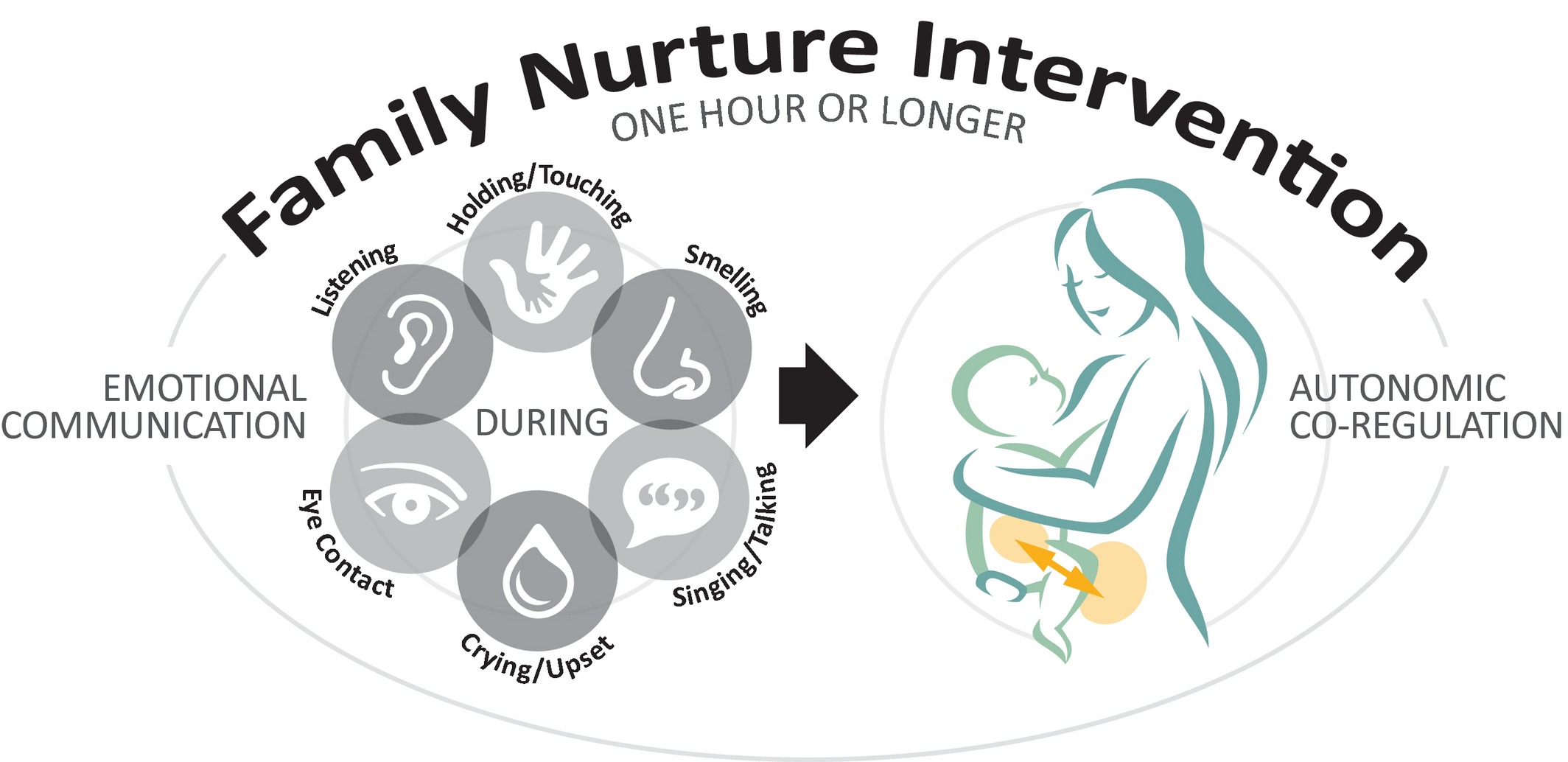Calming Cycle Theory and Emotional Programming
New research has found important linkages between mothers at the autonomic nervous system level. This is part of our nervous system that is outside of our awareness. The linkage process starts in the womb and continues after birth. This process affects the mother’s well-being and the infant’s development. It’s also systems theory in action.
The medical process has had increasing success in helping premature infants survive and develop. This has also created a natural experiment to study what happens when the normal gestation period is interrupted. Some mothers and infants do well, and others do not. Dr. Welch and others have wanted to understand what leads to different outcomes. Welch and Ludwig propose two ideas to explain the difference in outcomes. These are a) the Calming Cycle Theory and b) the Autonomic Socioenotional Reflex (ASR). I’ll discuss the ASR in the next blog post.
Calming Cycle as Co-Regulation
The authors believe that a process of co-regulation begins in the womb, which forms an emotional connection between mother and infant. It is a co-regulation connection that promotes behaviours that have been thought to be innate mothering and infant behaviours. If the normal process occurs, as with full-term births, the mother and infant have learned to orient and approach each other automatically. This “innate” behaviour fosters caring, feeding, and a calming response in both the mother and infant.
Over the years, Welch has observed that premature birth can disrupt this approach-orienting behaviour. This can create an avoidance non-orienting behaviour, leading to distress in both the mother and infant. It then becomes a negative cycle for both the mother and child. However, Welch observed the approach-orienting behaviours of mothers and infants and developed an intervention to help correct avoidance-orienting situations. This is based on what she calls the Calming Cycle Theory and Family Nurture Intervention.
Calming Cycle Re-Programmed – Family Nurture Intervention
The Family Nurture Intervention comprises sessions where the mother and infant ( as soon as possible ) have skin-to-skin contact, soothing talk, eye contact, and odour contact. Over a period of repeated one-hour sessions, the mother and child’s physiology calms down. Over time, the calming effect is automatic for both. This strengthens the approach-orienting behaviour and creates an adaptive emotional connection between the two. It also sets up the infant for socialization with others.
In 2016, Welch proposed that “this early introduction of repeated mother-infant sensory interactions is expected to alleviate maternal depression, anxiety, and guilt as well as lessen infant aversion to contact that stems from both separation/isolation and the many stressful medical procedures performed as life-saving interventions.”
Follow-up research based on this approach has found:
- significantly improved FNI maternal caregiving behaviors at 36 weeks (Hane et al., 2015)
- decreased maternal depressive and anxiety symptoms in infants assessed at 4 months of age (Welch, Hal- perin et al., 2016).
- FNI infants showed highly significant increases in EEG power and decreases in EEG coherence at term age in frontal areas associated with socio-emotional outcomes that predict improved out- comes (Hane et al., 2015; Myers et al., 2015; Welch, Myers et al., 2014).
- FNI infants also showed significantly improved social relatedness, attention, neurodevelopment, and decreased risk for autism spectrum disorder at 18 months corrected age (Welch et al., 2015, from Welch 2017)
Emotional Connection – the start of Emotional Programming?
Welch and Ludwig propose a new construct, called emotional connection, to help explain their observations and results. Dr. Bowen used the term “emotional contact” when he wrote about relationships. He wrote that when two individuals could freely share their thoughts, hopes, fears, and dreams, they had good emotional contact. Fear of rejection and criticism often prevents people from experiencing emotional contact. Welch wrote the following about establishing a good emotional connection:
“When the mother keeps this wide array of feelings to herself, there is an emotional barrier between her and her infant. Many mothers are reluctant to allow open expression of their emotions for fear the strong negative content will negatively impact the infant. However, when the prosody of strong emotion is conveyed by the mother in her native language (i.e. the language spoken to her by her mother as a baby), we often observe a positive response; most commonly, the infants become alert and make eye contact..”
By keeping a “wide array of feelings to” oneself, individuals, like the mothers in Welch’s interventions, prevent the experience of good emotional contact. This is an aspect of not being able to define oneself in relationships, which can lead to negative outcomes. I think a healthy development process establishes good emotional connections, which lay the foundation for good emotional contact later in life.
Calming Cycle Theory is based on the concept of co-conditioning at the level of the autonomic nervous system. The authors propose the idea of an Autonomic Socioemotional Reflex to explain this. This is the topic of the next post.
Thank you for your interest in family systems.
Dave Galloway
dave.galloway@livingsytems.ca
You can find out more about the Family Nurture Intervention here.
Learn more about Bowen family systems theory here.
(1) I took the above quotes from Family Therapy in Clinical Practice, Jason Aronson, Inc. Kindle Edition.

